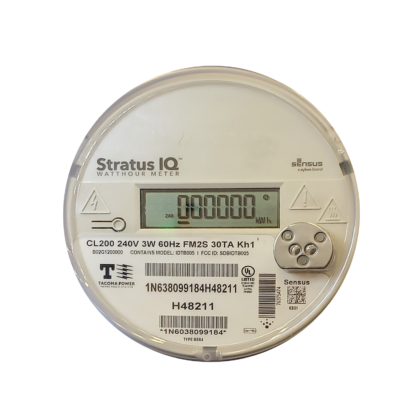Power Rates
New power rates effective April 1, 2025
Residential customers can expect an average increase of about $6.72 per month. Some major factors affecting rates for 2025-2026 include:
- Increased costs to operate and maintain our systems
- Inflation in materials and supplies
- Average utility construction costs have increased over 20-30% in the last three years.
What Goes into Electric Rates?
- The energy use reflects the costs associated with buying or generating electricity.
- The delivery rate reflects the cost of equipment (poles, lines, transformers, etc.) associated with delivering electricity from its source to your home or business.
- The customer charge includes costs for connecting to the grid, meters, customer care, and taxes.
- 2025-2026 Rate Adjustments
-
Average residential increase
- $6.72 average residential monthly increase in 2025
- $7.09 average residential monthly increase in 2026
Average small general business (B rate)
- $9.79 average monthly increase in 2025
- $10.02 average monthly increase in 2026
Average general business (G rate)
- $131 average monthly increase in 2025
- $144 average monthly increase in 2026
- How Our Rates Compare to Other Utilities
-
Tacoma Power’s rates remain among the most affordable in the region. Here are our rates compared to those of other power utilities.

How to Read Your Legacy Digital Electric Meter
You can track how much electricity you use at home by reading your meter.
If you have a dial meter, from left to right, read the smaller of the two numbers on either side of the pointer. The sample shown here has a reading of 8542. If your meter has four dials, multiply the meter reading by 10. That number is the amount of kilowatt hours you’ve used.
To determine how much electricity you’ve used, subtract your previous meter reading from the present one.
How to Read Your Advanced Electric Meter
 There are multiple channels on advanced electric meters. This allows the meter to show multiple pieces of information on the display periodically.
There are multiple channels on advanced electric meters. This allows the meter to show multiple pieces of information on the display periodically.
The first display flash shows the total electricity usage through the meter. Usage is displayed cumulatively since meter installation is measured in kWh (kilowatt-hours). We use this read for billing. You will also see 888888 flash on the display, which is a check to ensure the display is functioning correctly.
To determine how much electricity you’ve used, subtract your previous meter reading from the present one. For power, usage is billed per kWh used.
Some commercial customers have a multiplier applied to their meter read to calculate the actual kWh billed.
How to Read Your Residential Solar Meter
Solar customers may have two of the electric meters pictured here, a Production (or Generation) meter, and a Net Meter. The Production Meter measures electricity generated by the solar panels in kWh before home consumption. This can also be accomplished on a solar customer’s solar monitoring app or other customer-owned equipment. If excess electricity (electricity that cannot be used in the home at the time that it is produced) is sent to Tacoma Power’s grid, it will be measured on the Net Meter’s second channel (the second number to appear after the display shows 888888). The Net Meter also measures electricity purchased from Tacoma Power in kWh. That is shown on the first channel of the Net Meter (the first number to appear after the display shows 888888).
To determine your bill, the amount of electricity sent to Tacoma Power is subtracted (or credited) from the amount of electricity purchased from Tacoma Power. The information shown on Production Meters is not used in calculating customer electricity bills. Also, there is no concern if you see 888888 on your meter. It is there to verify that the display is functioning properly.
Billing questions
For more information about your utility bill, call 253-502-8600.


